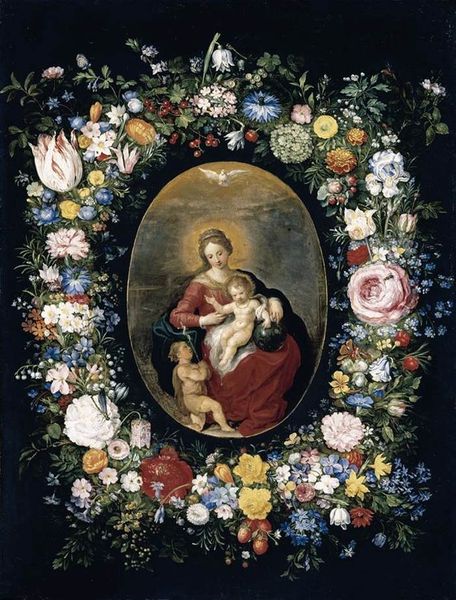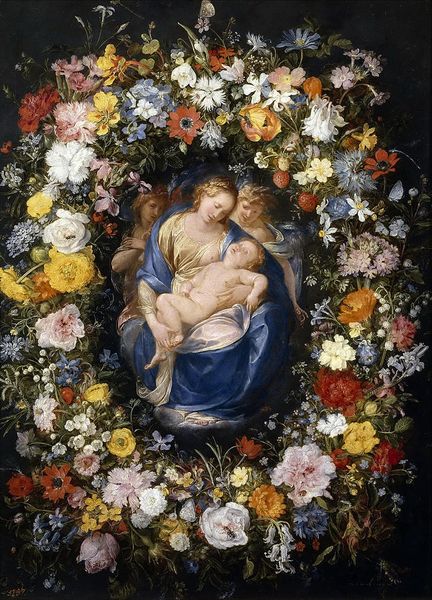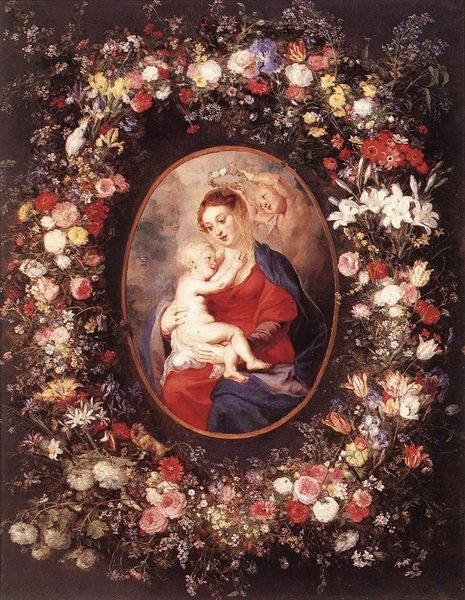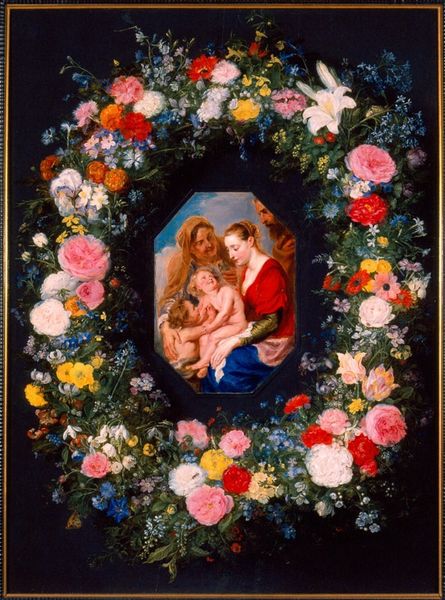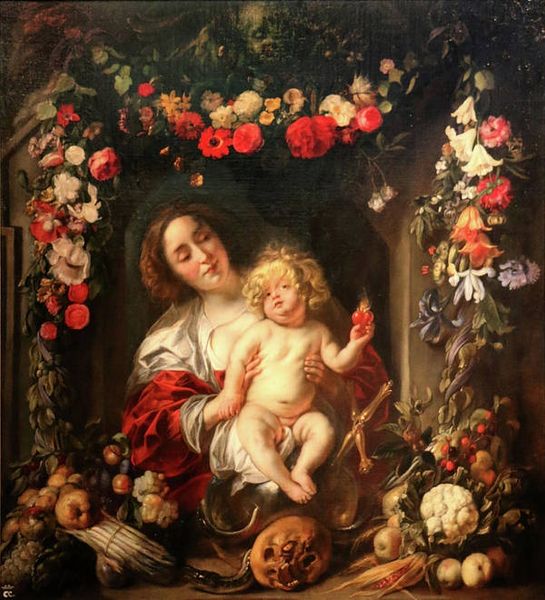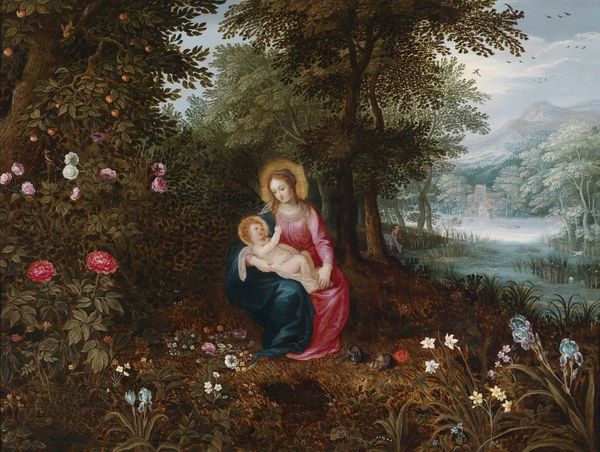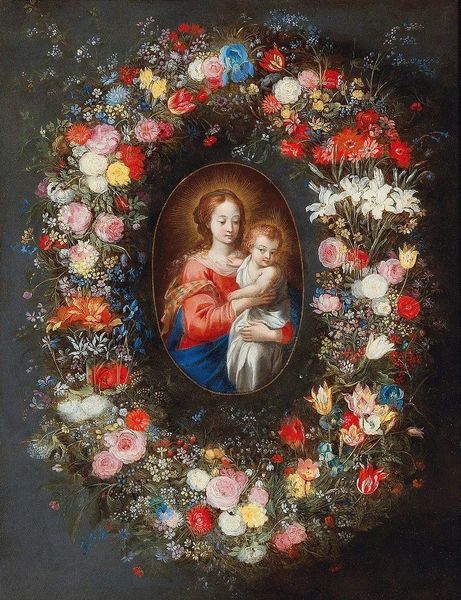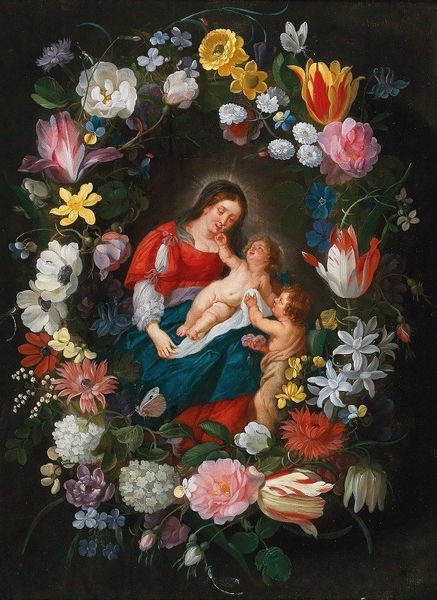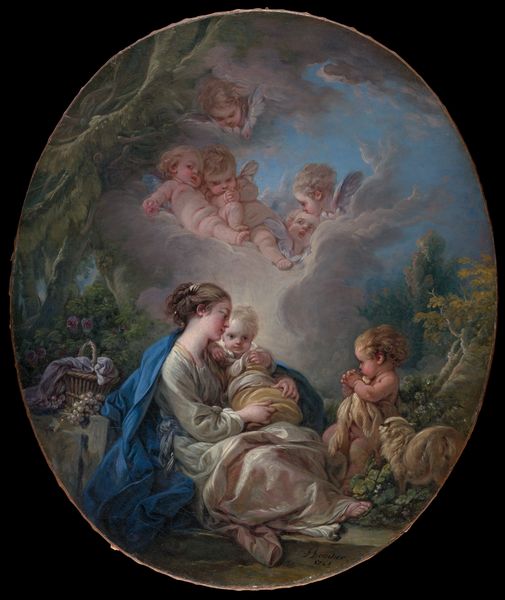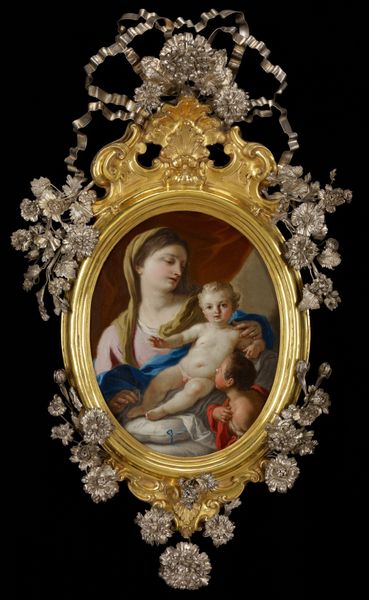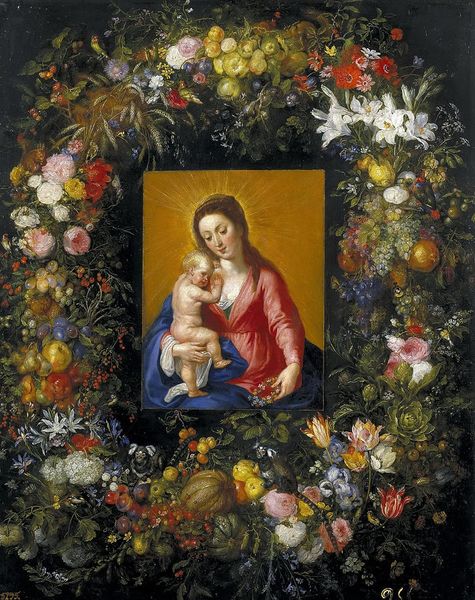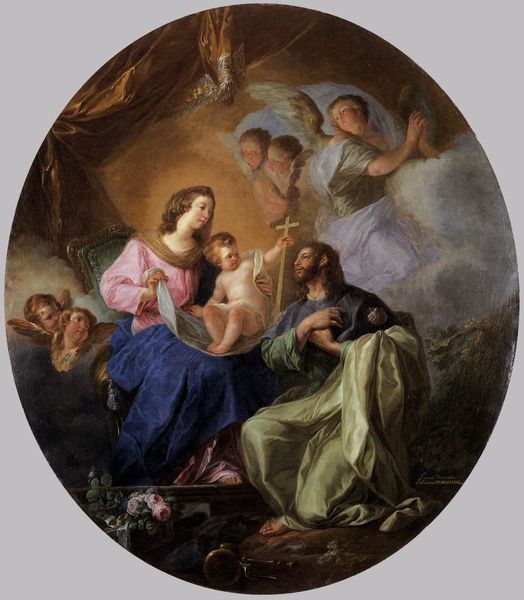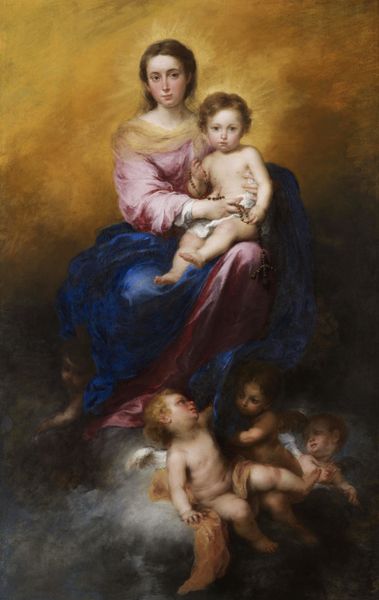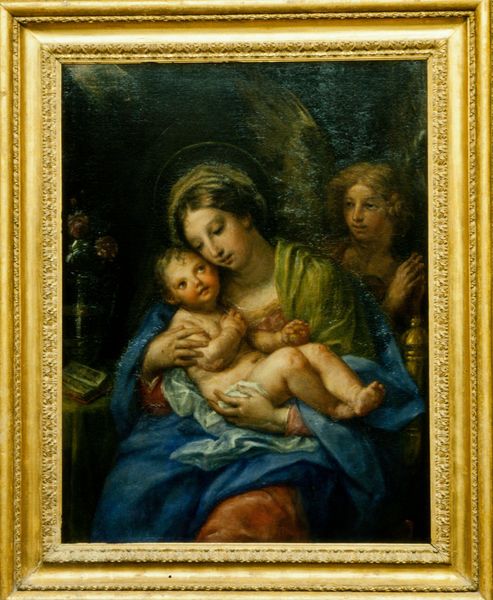
painting, oil-paint
#
portrait
#
allegory
#
baroque
#
painting
#
oil-paint
Copyright: Public domain
Curator: Here we have Peter Paul Rubens' "The Virgin and Child in a Painting surrounded by Fruit and Flowers," created around 1620. It’s a stunning example of baroque allegory in oil on canvas. Editor: My first thought? Overwhelming. A cascade of abundance borders a serene central image. It’s quite a contrast, wouldn’t you say? Curator: Absolutely. It represents not just the Holy Mother and Child, but the Church itself, flourishing amidst earthly bounty. Consider the politics of imagery at that time – the Counter-Reformation Church leveraging such depictions to reassert its spiritual authority. Editor: The very excess reads like a deliberate visual strategy, almost defiant. How can we look at this depiction of idyllic motherhood and not question its accessibility for actual women of the era? The figures of idealized motherhood were potent tools for maintaining particular power dynamics. Curator: Precisely. And Rubens, at the height of his career, understood the power of visual persuasion implicitly. This artwork was designed, first and foremost, to be seen and admired in a specifically curated setting—a church, a private collection, spaces steeped in socio-political significance. The presentation of virtue as maternal purity cannot be divorced from the structure within which it was commissioned and for what ideological reasons. Editor: I’m especially drawn to the details in the surrounding still life, this wealth of natural elements—flowers, fruit, little woodland creatures that are rendered with almost scientific precision. It's also pretty colonial if you think about all those species and products brought to Europe at the expense of foreign lands. Curator: Good point! That abundance also serves as a powerful visual metaphor. Think of the era: new trade routes, the influx of goods and materials…Rubens is making a clear connection to both earthly and spiritual riches, a visual justification perhaps, for accumulating such wealth. Editor: So, is it fair to suggest the artwork participates in legitimizing early capitalistic drives, even as it venerates the Holy Mother? Or is it reaching too far to connect consumerism and divinity this way? Curator: Perhaps. But looking through a critical lens, it is difficult not to think that that combination did so much social work in normalizing what would become a western trope. These kinds of dialogues are important as people reflect and change through historical context. Editor: Agreed. Thank you for highlighting so many angles within this vibrant image. It is more than just the presentation of an era. It represents what values were maintained through these portraits.
Comments
No comments
Be the first to comment and join the conversation on the ultimate creative platform.
